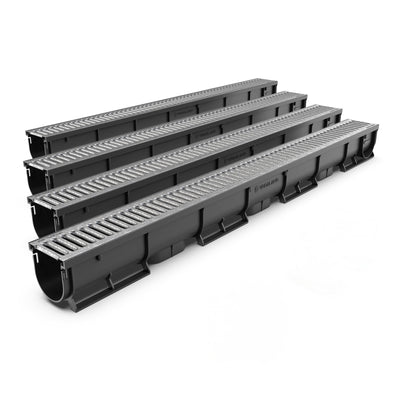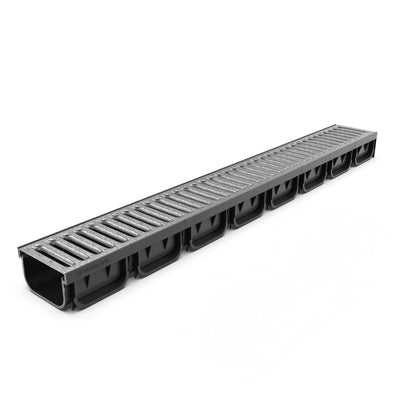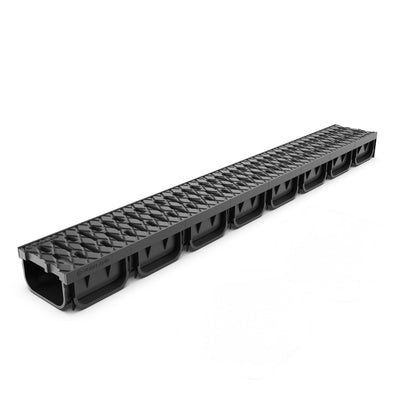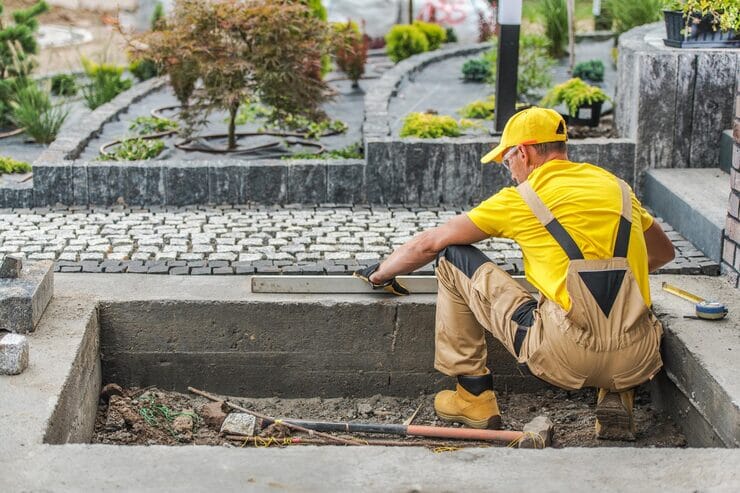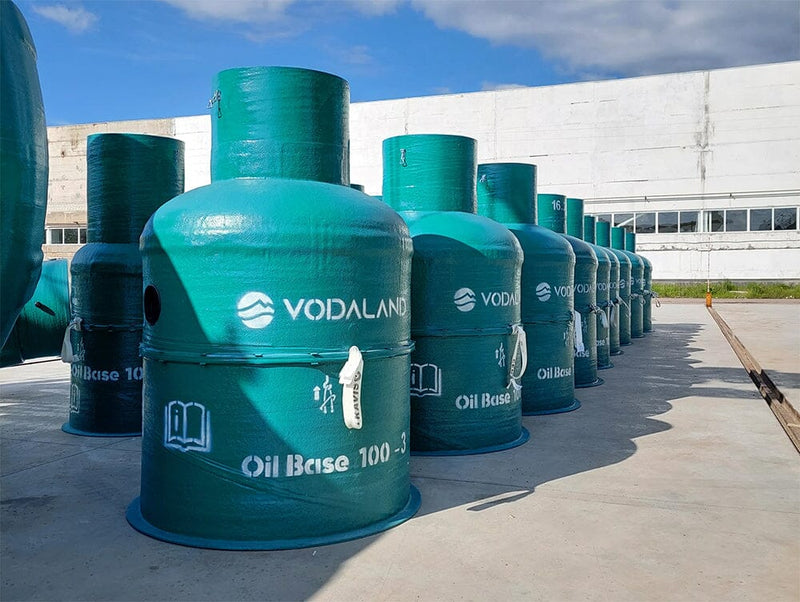How to Prevent Basement Flooding During Heavy Rain
-
27/11/25
-
Vodaland Canada
Why Basement Flooding Happens
Most basement leaks come down to a few common causes — saturated soil, poor drainage, or grading that pushes water toward your home. When storms linger, soil pores fill and pressure builds along footing joints, window wells, and utility penetrations. So, how does heavy rainfall cause flooding? Prolonged heavy rainfall saturates the ground, creates lateral flow paths, and triggers overland flooding that overwhelms undersized drainage. Small openings become entry points, and even sealed finishes can weep when hydrostatic pressure rises. The fix starts outside: shape the landscape around your home, move water away from your foundation, and size conveyance routes for peak events. A practical plan keeps stormwater on a controlled path before it ever tests the interior.

Immediate Risks of Basement Flooding
A sudden basement flood does more than soak boxes. It can undermine finishes, swell trim, and stain the basement floor and basement walls. Electrical equipment near puddles becomes a safety risk, and damp framing invites odors and microbes. For any homeowner, the fallout includes cleanup costs, schedule disruptions, and potential insurance complications. Acting early limits water damage and curbs the risk of flooding in the next storm cycle. Think of a wet corner as a warning, not a mystery, and treat it with the same urgency as a roof leak.
Common problems you might see:
-
Discolored paint, soft drywall, or peeling flooring that reappears after storms
-
Efflorescence lines on concrete, musty storage, and corrosion at metal feet
Immediate steps that lower the impact:
-
Shut off power to affected circuits, remove any soaked items immediately, and begin ventilating the area.
-
Document the event, then schedule an assessment while conditions are fresh
Effective Ways to Prevent Basement Flooding
If you want a clear plan for how to prevent basement flooding during heavy rain, start outside and work inward. Create reliable routes that direct water away from the house, then add interior safeguards for peak events. Maintenance of surface conveyance, targeted sealing, and properly sized pumping systems form the core strategies that keep your basement dry. The goal is to prevent basement flooding through layered defenses that offer real flood protection and help reduce surprises in shoulder seasons and spring thaws. The following steps help prevent basement flooding in most homes without requiring major reconstruction.
Check and Maintain Gutters and Downspouts
Roof runoff is the biggest controllable inflow during heavy rain. Clean gutters twice a year, repair seams, and ensure downspouts are firmly attached with extensions that discharge several meters away from your home. Where landscaping allows, bury leaders to daylight for a tidy look and fewer trip hazards. Confirm that splash blocks point downslope, not toward planters and watch for washouts under elbows that can misdirect flow. This simple routine can prevent water from pooling beside the foundation and sharply cut the volume your yard must absorb when the sky opens.
Ensure Proper Grading Around Your Home
Walk the perimeter after storms and notice where puddles linger. Add compacted topsoil to build a gentle fall around your home that directs runoff away from your foundation. Correct mulch beds that trap water. If patios or walkways have settled toward the structure, consider lifting or re-laying those sections to restore proper slope. Even a few centimeters of elevation change over a short distance can often eliminate stubborn puddling. When combined with functioning gutters, proper grading provides a passive, continuous defense that reduces the load on interior drainage systems and lowers the risk of new seepage lines.

Install a Sump Pump and Backup System
Where the water table rises quickly, a reliable sump pump is essential insurance. Choose a sealed basin, a vertical float switch, and a dedicated circuit. Add a battery or generator backup to keep pumping during outages, along with an audible high-water alarm. In combined or surcharged sewers, ask a licensed plumber about installing a backwater valve to block sewage from entering lower fixtures. These options reduce the risk of standing water when storms park overhead. Together with exterior measures, a dependable pump package turns unpredictable groundwater into a managed discharge.

Seal Foundation Cracks
Under pressure, even a hairline crack can allow significant moisture. Inspect corners, pipe penetrations, and the cove joint where slab meets wall. For active leaks, polyurethane or epoxy injections bond the cracks while remaining flexible within the concrete matrix. For minor weeps, a compatible surface seal may be sufficient when used alongside grading improvements. Address leaks before finishing rooms to avoid trapping moisture behind studs or insulation. Sealing is part of a comprehensive system, not a standalone solution, and is most effective when combined with exterior drainage measures that keep the wall assembly drier during storms.
Improve Drainage With Trench Drains and Slot Drains
Low entries like garage slabs, walkouts, and patio doors often sit where runoff concentrates. Surface channels capture flow before it crosses thresholds. Consider trench drains where vehicles and heavy foot traffic need robust grates, and slot drains for minimal profiles that disappear into pavers or decorative concrete. Properly designed trench drains collect and convey water to a legal outlet or sump, while sleek slot drains handle sheet flow without bulky grates. Tying these channels into broader basement drainage plans gives you clean control on the surface and relief during peak events.

Advanced Drainage Solutions for Heavy Rain
Some properties are situated in swales or at the base of long slopes, where off-site runoff crosses the lot. In these situations, it’s important to properly size capture points and conveyance lines to handle peak events. This may include installing yard inlets at low spots, using larger-diameter pipes, reinforcing outfalls, or creating dispersion areas to break up concentrated flow. Keep cleanouts accessible for easy debris removal after leaf season, and add freeze protection where outlets are shaded. These upgrades are about managing probability, not perfection, and they materially lower the risk of flooding when soils saturate and storms stall.
Components often included in an upgrade:
-
Yard inlets and curb cuts that collect sheet flow before it reaches thresholds
-
Larger conveyance piping, cleanouts, and energy-dissipating outfalls so you send water away without erosion
Catch Basins for Collecting Surface Water
When puddles persist in planters, under downspouts, or near walkouts, catch basins act like relief valves. Set the grate slightly below grade at the low point, then connect to a lawful discharge. Debris baskets simplify maintenance and protect the run from leaves and mulch. Avoid placing basins where soil continually slides in, and add small swales that steer water into the inlet. When basins are combined with good grading and clear gutters, nuisance ponds disappear, and hardscape remains cleaner. Consistent maintenance preserves capacity and improves season-to-season reliability at the exact spots that used to test door thresholds.
Slot Drains for Low-Profile Installations
Minimalist channels shine near patio doors, pool decks, and paved courtyards. Slot drains capture sheet flow along long edges without visible grates, keeping travel paths smooth for wheels, furniture, and footwear. Choose corrosion-resistant bodies and plan routine checks to ensure fine sands do not clog the slit. Pair them with a hidden collector that routes runoff to a sump or daylight. This approach integrates seamlessly with modern hardscapes and provides discreet control where appearance matters. When installed alongside regrading and targeted inlets, slot systems move surprising volumes of water and keep entertainment areas functional during downpours.
Why Choose Vodaland Drainage Systems
Hardware quality matters most on the worst days of the year. Vodaland channels are engineered for durable flow, straightforward installation, and long service life in residential applications. For rugged water capture at garage aprons or driveway thresholds, consider exploring Vodaland trench drains with secure grates and robust bodies. For clean architectural lines beside doors and pavers, slot drains provide a slim profile that still moves serious water. Combine these components with tuned grading, targeted crack sealing, and a dependable pump package to protect your home, prevent water intrusion, and help prevent basement flooding. With the right mix of products and planning, you can reduce the risk during heavy rain and keep stormwater away from your home where it belongs.
Featured Products
From Trench drain for yard, patio and garden collection




